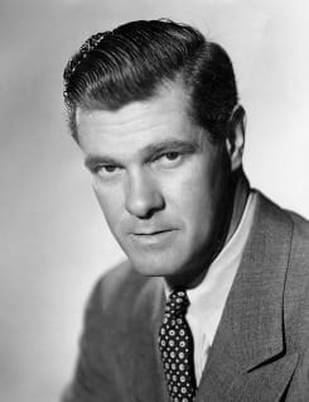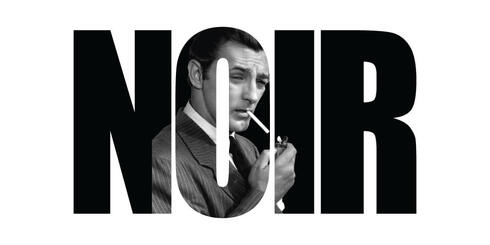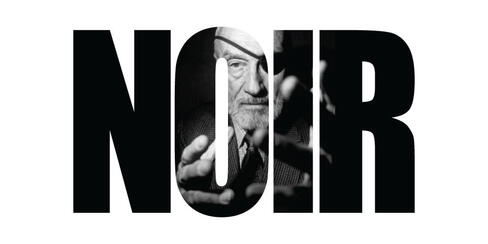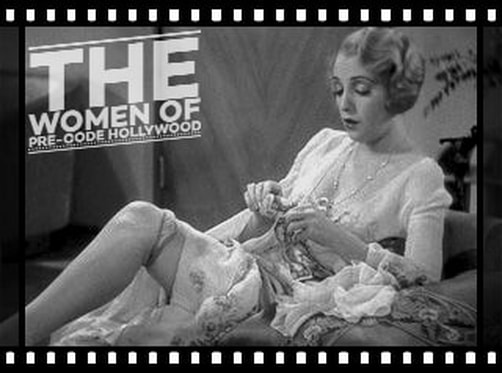PAUL KELLY
AND FILM NOIR
While Paul Kelly's name isn't immediately conjered when thinking of film noir, he did however, provide some memorable performances in a string of smaller-budget noirs. These films include: portraying a deranged buddy of DeForest Kelley in Fear in the Night (1947), as the cop who narrates Anthony Mann’s Side Street (1949), as a determined DA in The Secret Fury (50), and as a stiff-necked police chief in Robert Siodmak’s The File on Thelma Jordon (1950), amoung others..
AVAILABLE FILMS:
CHINA'S LITTLE DEVILS (1945)
CROSSFIRE (1947)
DEATH ON THE DIAMOND (1934)
FEAR IN THE NIGHT (1947)
FILE ON THELMA JORDAN, THE (1950)
FLIGHT COMMAND (1940)
GLASS ALIBI, THE (1946)
GUILTY OF TREASON (1949)
INVISIBLE STRIPES (1939)
MURDER WITH PICTURES (1936)
PARACHUTE BATTALION (1941)
PUBLIC HERO NO. 1 (1935)
ROARING TWENTIES, THE (1939)
SAN ANTONIO (1945)
SECRET FURY, THE (1950)
SIDE STREET (1950)
SPLIT SECOND (1953)
STAR OF MIDNIGHT (1935)
STEEL CAGE, THE (1954)
WITHIN THE LAW (1939)
CROSSFIRE (1947)
DEATH ON THE DIAMOND (1934)
FEAR IN THE NIGHT (1947)
FILE ON THELMA JORDAN, THE (1950)
FLIGHT COMMAND (1940)
GLASS ALIBI, THE (1946)
GUILTY OF TREASON (1949)
INVISIBLE STRIPES (1939)
MURDER WITH PICTURES (1936)
PARACHUTE BATTALION (1941)
PUBLIC HERO NO. 1 (1935)
ROARING TWENTIES, THE (1939)
SAN ANTONIO (1945)
SECRET FURY, THE (1950)
SIDE STREET (1950)
SPLIT SECOND (1953)
STAR OF MIDNIGHT (1935)
STEEL CAGE, THE (1954)
WITHIN THE LAW (1939)
VIDEO TRIBUTE
Paul Kelly

Paul Kelly was an American actor who was born on August 9, 1899, in Brooklyn, New York. He had a career spanning several decades, from the 1920s to the 1950s, and appeared in numerous films, stage productions, and television shows.
Kelly began his acting career on Broadway, where he achieved success in plays such as "Riders to the Sea" and "What Price Glory?" In the 1920s, he transitioned to silent films and made his screen debut in the movie "The Devil's Apple" (1929). He quickly gained recognition for his talent and versatility as an actor.
Throughout the 1930s and 1940s, Kelly appeared in a wide range of film genres, including dramas, comedies, and crime films.
He worked with acclaimed directors such as Howard Hawks, Fritz Lang, and William Wyler, and starred alongside notable actors such as Marlene Dietrich, Cary Grant, and Lana Turner. Some of his notable films from this period include "Flying Devils" (1933), "The Roaring Twenties" (1939), and "Crossfire" (1947).
In the 1950s, Kelly transitioned to television and appeared in various popular shows of the time, including "Alfred Hitchcock Presents," "The Twilight Zone," and "Perry Mason." He continued to work in both film and television throughout the decade.
Paul Kelly was known for his ability to portray a wide range of characters, from charming and suave to tough and villainous. He had a natural charisma and presence on screen that captivated audiences. His performances were often praised for their depth and authenticity.
Tragically, Kelly's life and career were cut short. In 1956, he was involved in a highly publicized scandal when he and his girlfriend were charged with the murder of her husband. Kelly was convicted of manslaughter and served a prison sentence. He was released in 1961 but tragically passed away on November 6, 1956, from a heart attack while out on parole.
Despite the unfortunate circumstances surrounding his later life, Paul Kelly left a notable legacy in the world of film and entertainment. His talent and contributions as an actor continue to be appreciated by film enthusiasts and his body of work remains a testament to his skill and versatility as an actor.
Kelly began his acting career on Broadway, where he achieved success in plays such as "Riders to the Sea" and "What Price Glory?" In the 1920s, he transitioned to silent films and made his screen debut in the movie "The Devil's Apple" (1929). He quickly gained recognition for his talent and versatility as an actor.
Throughout the 1930s and 1940s, Kelly appeared in a wide range of film genres, including dramas, comedies, and crime films.
He worked with acclaimed directors such as Howard Hawks, Fritz Lang, and William Wyler, and starred alongside notable actors such as Marlene Dietrich, Cary Grant, and Lana Turner. Some of his notable films from this period include "Flying Devils" (1933), "The Roaring Twenties" (1939), and "Crossfire" (1947).
In the 1950s, Kelly transitioned to television and appeared in various popular shows of the time, including "Alfred Hitchcock Presents," "The Twilight Zone," and "Perry Mason." He continued to work in both film and television throughout the decade.
Paul Kelly was known for his ability to portray a wide range of characters, from charming and suave to tough and villainous. He had a natural charisma and presence on screen that captivated audiences. His performances were often praised for their depth and authenticity.
Tragically, Kelly's life and career were cut short. In 1956, he was involved in a highly publicized scandal when he and his girlfriend were charged with the murder of her husband. Kelly was convicted of manslaughter and served a prison sentence. He was released in 1961 but tragically passed away on November 6, 1956, from a heart attack while out on parole.
Despite the unfortunate circumstances surrounding his later life, Paul Kelly left a notable legacy in the world of film and entertainment. His talent and contributions as an actor continue to be appreciated by film enthusiasts and his body of work remains a testament to his skill and versatility as an actor.
Quotes:
none available
Trivia:
In 1927, he spent 25 months in California's infamous San Quentin prison for beating to death Ray Raymond, the first husband of Dorothy Mackaye, an actress who would later become his wife (judged an accomplice for withholding information, she herself was briefly imprisoned).
Kelly's last film before the manslaughter charge was The Poor Nut (1927) which was not released until the following August, by which time Kelly was behind bars. As a result, the film's distributors opted to remove Kelly's name from the credits, even though he played a prominent supporting role.
Kelly's last film before the manslaughter charge was The Poor Nut (1927) which was not released until the following August, by which time Kelly was behind bars. As a result, the film's distributors opted to remove Kelly's name from the credits, even though he played a prominent supporting role.




